Amritsar is the home to the Golden Temple, the most sacred site of the Sikh religion, main reason behind the large number of visitors travelling to this city every year. It is also a nice weekend gateway from Delhi with the flavours of history as well as faith.
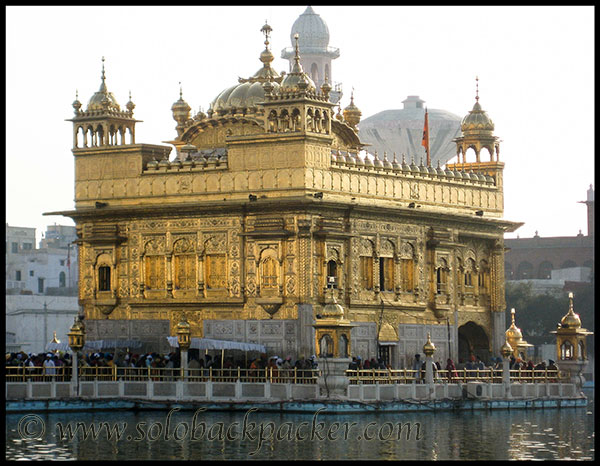
How To Reach Amritsar?
By Road: Amritsar is located on the National Highway 1, that is now a part of the Old Grand Trunk Road from Kolkata to Peshwar. All the way from Delhi to Amritsar, this well-maintained highway is the origin of some of the best food joints and dhabas in the country. Direct public buses are available to Amritsar from every major city in Northern India including Delhi, Jaipur, Bikaner, Jammu, Chandigarh, Shimla etc. Lot of air-conditioned Volvo buses are also available from Delhi as well as from Chandigarh.
By Train: Amritsar is a major railway junction and connected to all corners of India by many express and superfast trains. Two Shatabdi trains also run between Delhi and Amritsar.
A weekely train, Samjhauta Express, is available from Lahore in Pakistan, that goes upto Delhi.
By Air: Amritsar has a major international airport with frequent flights from Delhi. It also has direct flights to Mumbai, Jaipur and Srinagar. International flights include the destinations like Dubai, Doha, Birmingham, Tashkent etc.
How to Reach Golden Temple from Amritsar Railway Junction ?
Free Shuttle Buses: Free shuttle buses are available from the railway station to the Golden Temple. These buses are available at very frequent intervals, free of cost and can accommodate 15-20 people comfortably. They take up to 10 minutes from railway station to the temple.
Cycle-Rickshaws: Cycle-Rickshaws are available outside the railway station. They can easily accommodate two people and fare is about 25 INR per person. They take up to 20 minutes to reach the temple.
Auto-Rickshaws: They are also available outside the railway station and take 10-15 minutes to reach the temple. Fare is about 20 INR per person.
These vehicles drop all tourists near the Jalianwala Bagh, in front of the Golden Temple. From there you can walk towards the temple.
Towards Golden Temple: If you don’t have any luggage or don’t wish to bath, head straight towards the main entrance of the temple. Just before the entrance, there is a shoes collection point, where you can remove and deposit your shoes free of cost. From there, you should proceed inside the temple premises.
But for others, who reach there directly from the Railway Station after a long journey, the temple administration provides excellent facilities near the Golden Temple. Once you reach there after a long journey, you can avail the facilities of dormitory, toilets, bathrooms etc. You can keep your belongings in the lockers and also keep your shoes in the racks. Except, booking the accommodation, all the other facilities are free of cost.

Entry in the Temple Premises: Thousands of people arrive there daily, even in the early hours of chilly winter morning. Before entering in the temple premises, everybody is suppose to wash their feet with the water. In a chilly winter morning that can be a painful thought, but the beauty is that, just before the main entrance, warm and clean water floats in a shallow drain, where you can soak your feet without any hesitation. There are entrances to the temple from all the four sides, signifying the importance of acceptance and openness in the Sikh religion, but people mainly use the entrance from Jalianwala Bagh side.
While entering through the main entrance, you come across a beautiful large Sarovar (artificial lake), known as the AmritSar (Lake of Holy Water or Immortal Nectar, Amrit: Nectar, Sar: Lake). Its a vast lake spread inside the premises of the Golden Temple with the main temple in the middle of the lake. Hundreds of coloured fishes are visible inside the water. If you wish to bath there, you can do that happily ! There are designated places to take the bath and enjoy the water.
Around the lake, there are three holy trees (Bers) inside the temple complex, each associated with a historical event or saint.

In the middle of that lake, stands the glorious symbol of Sikh Religion, Sri Harmandir Sahib, completely covered with the gold, glittering intensely due to the rays of sun. Anyone who wants to enter the Harmandir Sahib may do so, irrespective of religion, colour, creed or sex. The only restrictions are that the person must not drink alcohol, eat meat or smoke cigarettes or use other non prescription drugs while in the shrine.
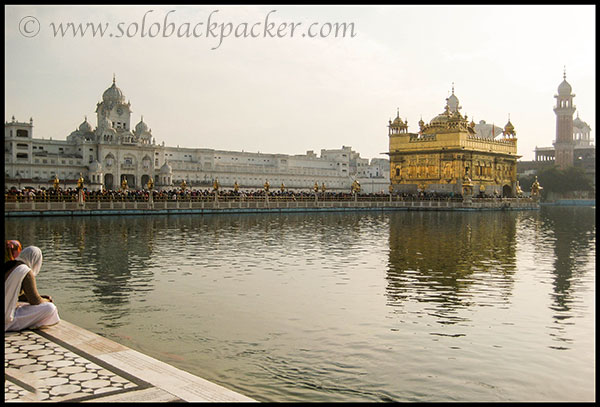
The Golden Temple Complex: It is the most sacred place for the followers of Sikh Religion, where the eternal Guru of Sikhism, The Sri Guru Granth Sahib, is always present. The Sri Guru Granth Sahib is the holiest literature in the Sikh religion. In 1708, at Nanded, the 10th guru of Sikhism, Guru Gobind Singh ji abolished the traditions of new gurus and made it ( The Sri Guru Granth Sahib) the eternal Guru and the leader of Sikhism. Since then, any place in the world, where the Guru Granth Sahib presents, is equally holy and precious to The Sikhs.

Sri Harmandir Sahib:The seat of The Sri Guru Granth Sahib in Amritsar is popularly known as Sri Harmandir Sahib. Because of this shrine, Amritsar is also known as Guru Di Nagri. The architecture of Sri Harmandir Sahib is designed by Guru Arjun Singh, the fifth Guru.
Before entering to the temple, you must cover your head with a piece of clothes/hanky/dupatta etc. If you don’t have a cloth, you can borrow a piece at the temple gate without any cost. These clothes are available in a basket at the entry gate.
A wide walkway connects the lake shore to the Sri Harmandir Sahib. The walkway is divided by the steel bars in two parts, so that people can move in a single direction easily. You should expect a long queue on the walkway, before entering the temple. It may take up to 1-2 hours depending on the crowd, to get a final entry in the temple.
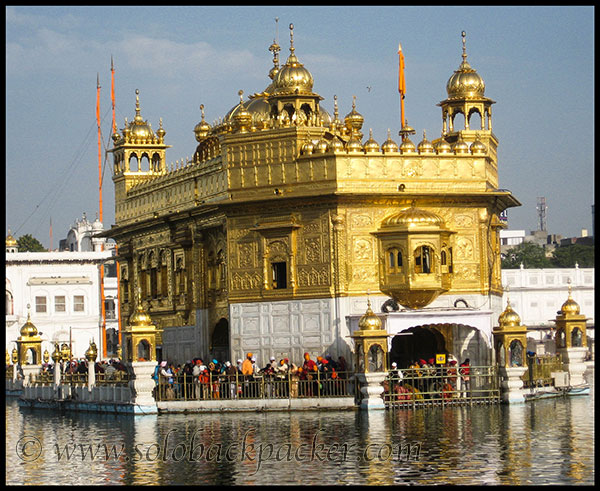
Lunger (Charity Kitchen) at The Golden Temple: After having a sacred darshan of Sri Guru Granth Sahib, it’s time for some pet puja (food). While coming out from the temple, at the beginning of the walkway, near the lake shore, look out for the people distributing halwa prasad to the devotees. One of the tastiest halwa, I have ever eaten is from this place, another one is at Gulshan Kumar’s Lunger during Mata Vaishno Devi Yatra. But, its only a prasad, so don’t expect to consume too much. Move out from there towards the shoes collection point. Adjacent to the shoes collection center, a walkway is leading towards the lunger (charity kitchen). Again, cover your head with a cloth and move inside a big hall, where large numbers of people dine together. Wait for your turn and you will get one of the most delicious food in the premises of the Golden Temple. You can eat as much as you can and as many times as you wish 🙂
After having a good lunch without any cost, it’s time to pay your tribute to the martyrs of a mass massacre held in 1919 by the British Army. Walk on the main road, in front of the Golden Temple for 5 minutes, and you will reach at the site of Jalianwala Bagh.
Jalianwala Bagh: Jalianwala Bagh is just 400 meters north of the golden temple. It is a public garden and houses a memorial of national importance, established in 1951 to commemorate the murder of peaceful celebrators on the occasion of the Punjabi New Year on April 13, 1919, famous in the history as Jalianwala Bagh Massacre.

A large number of people were gathered at Jalianwala Bagh to demonstrate peacefully, but soon General Dyer arrived there with his army and ordered fire without giving any warning or time to disperse. There were only one narrow exit in this garden, that too was occupied by the army. No way to escape, many people shot dead on the spot, and some even jumped into the nearby well to save their lives from the firing bullets, without any luck. That well became a graveyard for the hundreds of people.
Official British Raj sources placed the fatalities at 379, and with 1100 wounded. The true figures of fatalities are unknown, but are likely to be higher than the official figure of 379, in fact in thousands. That well is now a protected area inside the garden and known as Martyrs’ well.

The bullet marks are still visible and marked all around the boundary walls as well as on the houses, those surround the garden. A flame known as “Amar Jyoti” is later added to the garden premises.

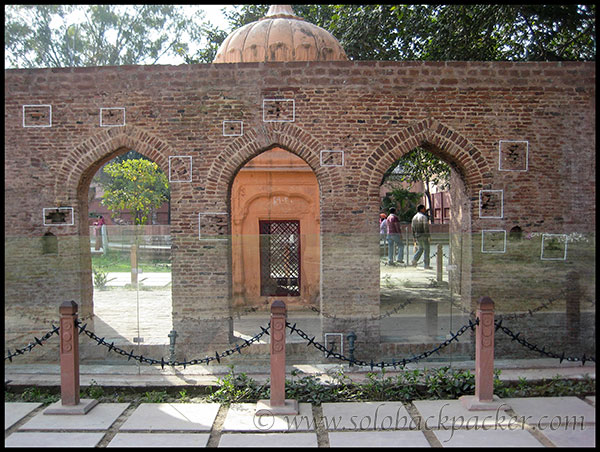







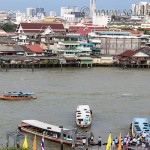
Fifth guru is guru arjan…..not guru arjan ‘SINGH’……..Singh applies only in the name of 10th guru…i.e. guru gobind Singh ji…..
Thank you for this information. I was not aware. I will do the correction soon in this post.